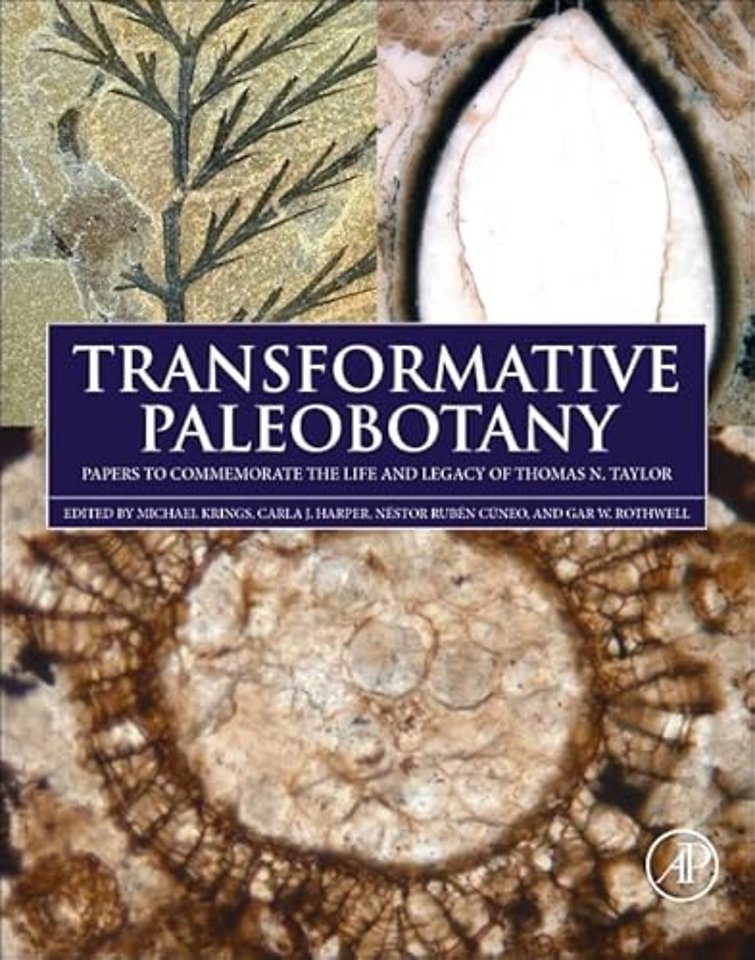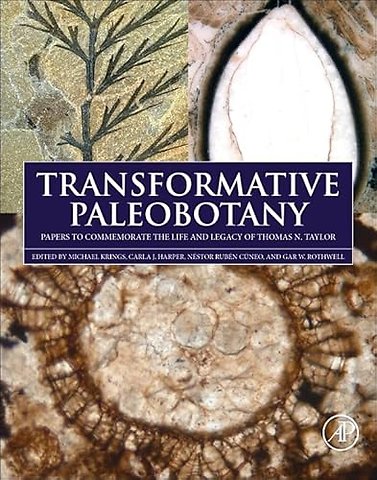<p>EARLY LAND PLANTS: INNOVATIONS AND ADAPTATIONS<br>1. The evolutionary origin of the plant spore in relation to the antithetic origin of the plant sporophyte<br>2. Early Devonian woody plants and implications for the early evolution of vascular cambia<br>3. Using architecture modeling of the Devonian tree Pseudosporochnus to compute its biomass<br>4. The advantages and frustrations of a plant Lagerstätte as illustrated by a new taxon from the Lower Devonian of the Welsh Borderland, UK<br>5. Early Tracheophyte Phylogeny: A Preliminary Assessment of Homologies</p> <p>LATE PALEOZOIC AND MESOZOIC PLANTS AND FLORAS<br>6. Lower Permian flora of the Sanzenbacher Ranch, Clay County, Texas<br>7. Permian ginkgophytes of Angaraland<br>8. Glossopterid plant remains in permineralization: What do they tell us?<br>9. Pachytestopsis tayloriorum gen. et sp. nov., an anatomically preserved glossopterid seed from the Lopingian of Queensland, Australia<br>10. A Triassic Mystery Solved: Fertile Pekinopteris from the Triassic of North Carolina, U.S.A.<br>11. Enigmatic, structurally preserved stems from the Triassic of central Europe: A fern or not a fern?</p> <p>PALEOBIOGEOGRAPHY, BIOLOGY, AND PHYLOGENETIC RELATIONSHIPS OF PLANTS<br>12. A comprehensive assessment of the fossil record of liverworts in amber<br>13. Aerodynamics of Fossil Pollen: Implications for Understanding Pollination Biology in Extinct Plants<br>14. Escapia gen. nov.: Morphological evolution, paleogeographic diversification, and the environmental distribution of marattialean ferns through time<br>15. Heterosporous ferns from Patagonia: The case of Azolla<br>16. Why are bryophytes so rare in the fossil record? A spotlight on taphonomy and fossil preservation<br>17. Fossil seeds with affinities to Austrobaileyales and Nymphaeales from the Early Cretaceous (early to middle Albian) of Virginia and Maryland, U.S.A: new evidence for extensive extinction near the base of the angiosperm tree</p> <p>FOSSIL MICROORGANISMS<br>18. Reactive Oxygen Defense Against Cellular Endoparasites and the Origin of Eukaryotes<br>19. Fossils of arbuscular mycorrhizal fungi give insights into the history of a successful partnership with plants<br>20. Looking for arbuscular mycorrhizal fungi (AMF) in the fossil record – an illustrated guide<br>21. Exceptional preservation of sessile, long-stalked microorganisms in the Lower Devonian Windyfield chert (Scotland)<br>22. Morphological convergence in forest microfungi provides a proxy for Paleogene forest structure<br>23. Ediacarans, protolichens, and lichen-derived Penicillium: A critical reassessment of the evolution of lichenization in fungi</p> <p>ANTARCTIC PALEOBOTANY<br>24. Polar Regions of the Mesozoic–Paleogene greenhouse world as refugia for relict plant groups<br>25. Leaf venation density and calculated physiological characteristics of fossil leaves from the Permian of Gondwana<br>26. Functional significance of cambial development in Vertebraria roots: How do unusual xylem traits serve life at a high latitude?<br>27. Cretaceous to Paleogene vegetation transition in Antarctica</p>

